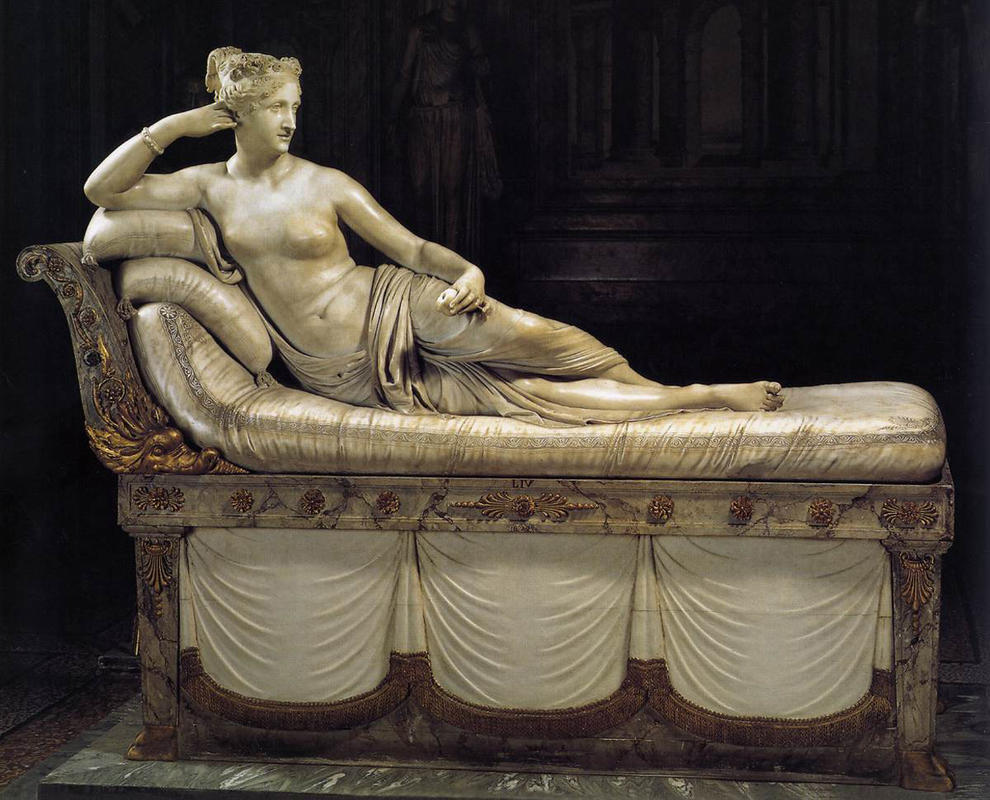Napoleon's sister, Pauline, posed for this bodacious Venus sculpture, and she wasn't shy about letting the court get a glimpse of her goods.
In fact, it was her idea to take most of her clothes off! Originally Canova wanted to sculpt Pauline as Diana, goddess of the hunt, but because she wanted to be naked soooo badly, he had to change the goddess to Venus, the goddess of love. Can't be clothed for that job! Perhaps this was a bit of rebellion for Pauline, who was married off to Prince Camillo Borghese at the suggestion of the Pope. He thought it might improve relations with French-occupied Northern Italy.
Camillo Borghese was super rich and had one of the greatest art collections of all time. Napoleon ended up making his brother-in-law an offer he could not refuse and much of the Borghese collection ended up in the Louvre. But back to Pauline. She was a strongminded lady who cavorted with a number of men other than her husband, so the marriage was not very happy.
On the plus side, she was an awesomely loyal sister to Napoleon and the only member of the family who stuck with him through thick and thin. Lorenzo Borghese, who wrote a book about his great great great great grandma, Pauline, appeared on ABC's The Bachelor.
The marble was rubbed with beeswax to make it extra shiny, and the whole sculpture was placed on a rotating stand so everyone could admire Pauline, err Venus, from every angle.
















When you think of neoclassical art, the first thing that comes to mind for me is sculptures of gods/goddesses. This sculpture by Canova pays a fair tribute to that old tradition by using Napoleon's sister as the subject. Considering this was done in 1808, it's important to note what was going on with Napoleon himself when this was created. During 1808, Napoleon was primarily concerned with invading Portugal through Spain because they didn't abide by his prohibitions on trade. It's funny to think about Napoleon invading Portugal in 1808 and his sister getting a sculpture made of her in a design from the other side of Europe. There's something ironic about that.